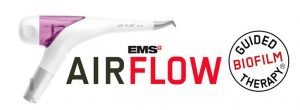So many aspects of our lives have turned digital that we almost take it for granted. Our clocks, watches, cameras, computers and TVs are all examples of how digitisation has changed our day-to-day living. It makes sense that digital technology has affected dentistry, too.

3Shape Trios Scanner
Some parts of digital dentistry have been around for a long time now. For example, patient note-taking and dental charting can be done on a computer instead of on paper.
Advantages of Digital Dentistry
From a dentist’s viewpoint, the major advantage of technology is that, in most cases, they can do things more efficiently or more quickly – and that can sometimes translate into a lower cost for the patient. From a patient’s point of view, digital dentistry tends to be faster and may make some services more comfortable.
Better Comfort
Certain types of scanning equipment and digital imagery can make a big difference. For instance, when we take some impressions, we now use digital technology instead of using traditional impression material (aka the “goopy” material!). With traditional impressions, patients often keep that goopy material sitting in their mouth for up to 10 minutes while the dentist waits for their impression material to set. For many treatments, we can now use a scanning machine, which means study models, crown, bridge and implant impressions are taken with a small camera in your mouth instead.
Time Saving
Digital dentistry can also help dentists mill patients’ dental restorations in-house. Many times, this means you can have a crown done start to finish in one appointment, without needing a temporary crown during the weeks in between your appointments. This also means a lower risk of a temporary crown becoming dislodged or falling off before you come back to finish your treatment.
Technology also helps us develop x-rays faster. Usually, diagnoses can be made during the patient’s appointment rather than waiting for x-rays to be developed by hand in a dark room. Some machines such as CBCT’s now allow 3D x-rays to be taken.
Easier Communication
Digital technology helps dentists share information (with your consent!) among other healthcare practitioners who may be treating you, like dental specialists, dental technicians, or doctors. Patient notes, impressions, photos or x-rays can be transferred to relevant professionals electronically rather than by post. It also tends to mean producing less paper, dental materials, chemicals and waste, helping reduce our impact on the environment.
Improved Patient Experience
The convenience of being able to book an appointment online is another area where digitisation has arguably improved dentistry. Having email and text reminders are helpful to ensure you remember whn your appointment is. The ability to sit in the treating chair and watch a movie or TV show to potentially distract you from what is going on in your mouth is another way that digitisation has changed a dental patient’s experience.
Why not make everything digital?
However, sometimes “digital” doesn’t always mean “better.” In some cases, a traditional method may deliver a better result for a patient. As an example, our dental clinic employs a ceramist who still uses conventional layering techniques for our aesthetic ceramic crowns and veneers. Also, we still take conventional impressions in certain situations, such as when we’re preparing retainers, whitening trays or denture work.
Here are some areas where we use digital technology at McKeefry Dental:
- Computerised dental software
- Online bookings
- Website, Facebook page and Instagram
- Emailing of accounts and invoices where appropriate
- Email and text message appointment reminders
- Digital OPG – skull x-rays
- Digital photography
- CEREC technology, which helps us mill back molar restorations in-clinic
- 3 Shape Trios scanner for mouth guard impressions, implant* impressions, some crown and bridge impressions, braces planning, Invisalign® planning
- TV screens in surgeries
- Invisalign® scanning, treatment planning and Clincheck™ simulation

Cerec Milling Machine and Furnace
Self-research
Many people now use their devices to search for healthcare services. Read our blog post on what to look for when choosing a dentist for more tips. It’s also very common for people to research online health information before attending an appointment; occasionally, some websites may publish misinformation. To help with this, we try to publish blogs with up-to-date information regarding dental care and oral health. Plus, you can always ask our friendly team about any information you see online or any questions you have.
The digital era, whether it relates to dentistry or other areas of our lives, is keeping us all on our toes, improving our experiences (mostly), and can mean exciting changes to how we live our lives. Perhaps one day we’ll even be able to provide dentistry from home via telemedicine – let’s watch this space!
*Any surgical or invasive procedure carries risks. If you have any concerns about any risks or other aspects of any procedure, you may seek a second opinion from an appropriately qualified health practitioner before proceeding.




